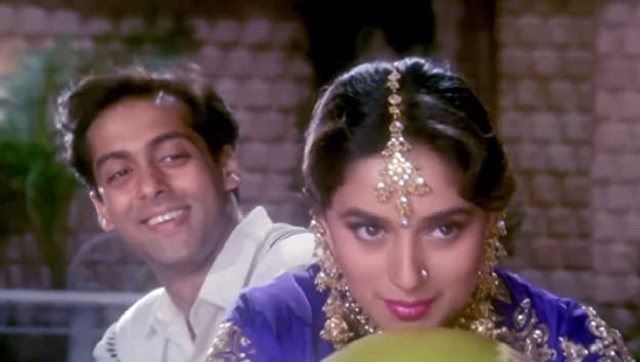Aldous Huxley writes in Music at Night and Other Essays “After silence, that which comes nearest to expressing the inexpressible is music.” It is perhaps true of some of the greatest exponents of the artform around the world – men and women who have given the unspeakable, the inexpressible a sound, and consequently a voice. That, however, is an idealistic approach, some would say left-leaning on the scales of art viewed as a form of politics. The fact of the matter is, a large fraction of the world’s artists simply reassert the dominating, in some cases, even the oppressive maxims of their age. To second-generation Indians, the search for a moral centre post the civic shake-up of economic liberalisation arrived through the films of Sooraj Barjatya and the music of Raam Laxman, who passed away today. Vijay Patil, better known Raam Laxman, is one half of the ’70s duo of the same name. After his partner passed away, Patil took on the identity himself. It would perhaps be an exaggeration to say that Laxman took Bollywood by storm or erected his own separate language in the industry. It was, after all, the age of R D Burman, Madam Mohan, Naushad, and other stalwarts who would not have made breaking through or breaking free any easier. Through relatively little known films like Saanch Ko Aanch Nahin (1979) and Hum Se Badkar Kaun (1981), Laxman became a survivor before he became a well-known entity. Perhaps it was providence that both Laxman and Mithun Chakraborty’s career intertwined in this journey of middling achievements and the odd spark of ingenuity and potential. Like Chakraborty, Laxman’s career hit an unexpected peak, before gradually spiralling into a sorry exhibition of a once-convincing untruth. That peak had to wait but it arrived in 1989, with Maine Pyar Kiya, the surprise hit of the decade. Salman Khan then lip-synced songs that today seem bafflingly outdated compared to the actor’s masculine image. ‘Dil Deewana’ and ‘Mere Rang Mein’ became instant classics in a country where men distinctively struggled to express their feminine sides. Lata Mangeshkar’s duets with SP Balasubrahmanyam in ‘Dil Deewana’ and ‘Aaja Shaam Hone Aayi’ became classics as endearing odes to love and longing against the will of the oppressor. The oddly written ‘Kabootar Ja Ja Ja’ seemed like a wanton flick of the magic wand at the time, but with age, that wand was to grow and materialise as some of the most absurd art ever created in the Hindi film industry.
The ’90s were a whirlwind time, with India’s second generation, unmoored by the invasive morality of the world, suddenly beginning to look inward. It called for a defense mechanism, a collective cry echoing India’s arcane values – some of them even oppressive to those already marginalised. The team of Sooraj Barjatya and Laxman scripted some of India’s most iconic songs, and a new politics that proved to be a wild detour from that of Maine Pyar Kiya. Tuned by the predictive alacrity of Laxman’s imagination, Hum Aapke Hain Koun..! became a mega blockbuster. Sidled by a loveable number like ‘Pehla Pehla Pyar Hai,’ most of the film’s songs are today known for how easily they can be ridiculed or their tacky choreography. ‘Didi Tera Devar Deewana,’ ‘Dhiktana,’ ‘Wah Wah Ramji’ and others almost seem like outdated specimens but at that time, they echoed the resonant values of the second-generation India – a call to the institution of family and the subtle yet potent infusion of Hinduism into the bloodstream of the watching Indian.
Laxman’s music today seems at odds with Indian modernism as much as it seems to contradict the liberalism of yore, the place our art and aesthetic allowed its women and their choices.
That said, it does not make Laxman’s contribution to Indian cinema any smaller for he echoed the concerns and anxieties of the Indian generation that chose strengthening the roots of its moral compass over pulling it in a different direction, one that could lead to both discovery and promise.
As with most artists who peak unanticipated and then struggle to handle the encore of expectation, Laxman’s late career is a bit of a farce, essayed best by the absurd, tone-deaf album of Hum Saath-Saath Hain. Evidently, Laxman was on a decline ever since the success of Maine Pyar Kiya. But to fall so alarmingly to a level where songs have no meanings and lyrics have no purpose is perhaps as sad as any an example of monumental decline.
In this case Laxman’s was more of a purge, a beguiling surrender to the crippled forces of imagination and creativity. ‘ABCD,’ ‘Chhote Chhote Bhaiyon Ke Bade Bhaiya,’ and ‘Sunoji Dulhan’ are all brain-dizzying creations of otherworldly madness and ineptness. All that said, Laxman leaves a thin yet telling legacy of a unique era in Bollywood, and the odd soulful melody that we will continue to sing in the future.
)